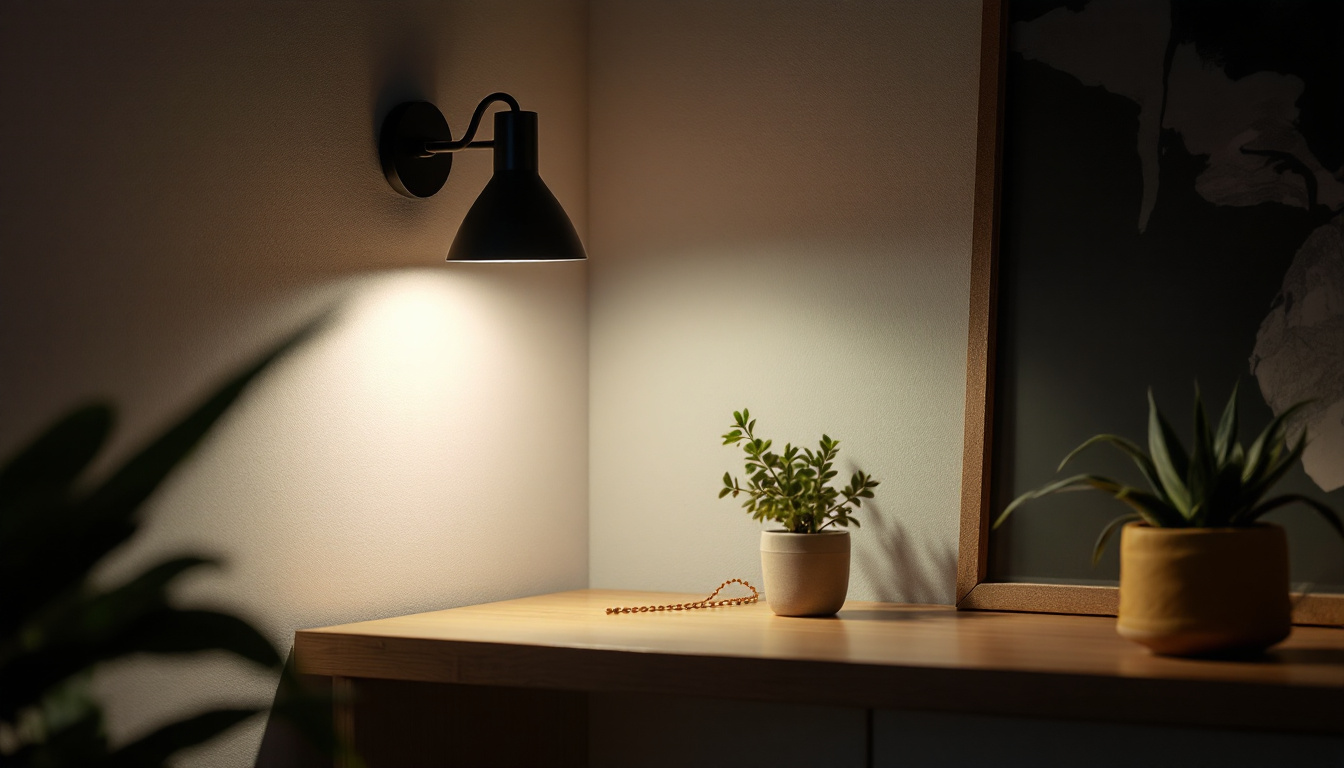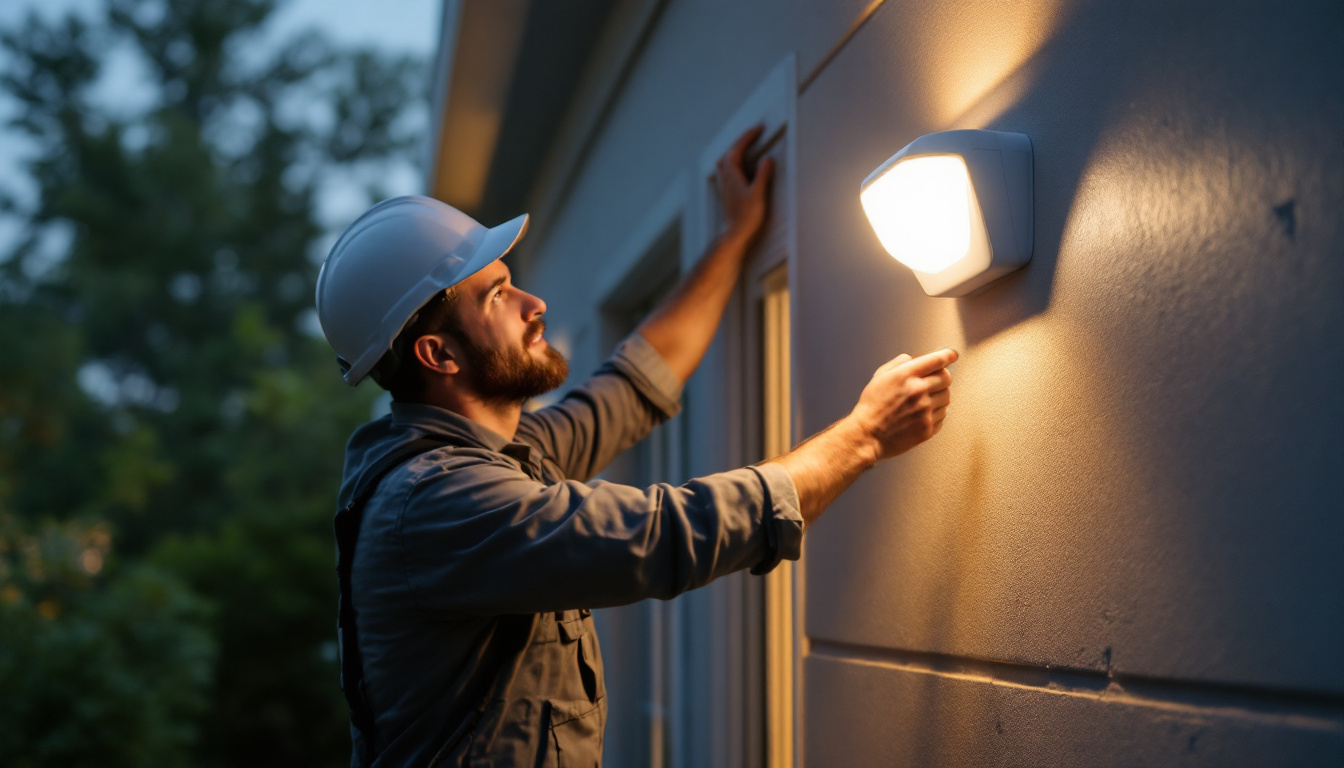
In the realm of outdoor lighting, exterior motion detector light switches have become a staple for both residential and commercial properties. They not only enhance security but also improve energy efficiency by ensuring that lights are only active when needed. For lighting contractors, integrating these systems can present a variety of challenges. This article delves into those challenges and offers practical solutions to help contractors effectively implement motion detector lighting systems.
Understanding the significance of exterior motion detector lights is crucial for contractors. These devices serve multiple purposes, including safety, security, and convenience. They can deter potential intruders, illuminate pathways, and provide peace of mind for homeowners and business operators alike.
One of the primary benefits of motion detector lights is their role in enhancing security. By automatically illuminating when movement is detected, these lights can startle intruders and alert occupants to potential threats. This proactive approach to security can significantly reduce the likelihood of break-ins and vandalism. Furthermore, many modern motion detector lights come equipped with advanced features such as adjustable sensitivity settings and customizable light duration, allowing homeowners to tailor the system to their specific needs. This adaptability not only enhances security but also ensures that the lights function optimally in various environmental conditions, whether it be heavy rain or snow.
Energy efficiency is another compelling reason to install motion detector lights. Traditional outdoor lighting systems often remain on all night, consuming unnecessary energy. In contrast, motion detectors ensure that lights are only activated when needed, leading to lower energy bills and a reduced carbon footprint. Additionally, many of these lights now utilize LED technology, which is known for its longevity and minimal energy consumption. By combining motion detection with LED bulbs, homeowners can enjoy an eco-friendly lighting solution that lasts significantly longer than traditional incandescent bulbs, thereby reducing the frequency of replacements and further contributing to sustainability efforts.
For homeowners, the convenience of motion detector lights cannot be overstated. They provide automatic illumination for late-night arrivals, making it easier to navigate pathways and entrances without fumbling for switches. This added convenience can enhance the overall user experience and satisfaction with outdoor lighting systems. Moreover, the integration of smart technology into motion detector lights has revolutionized their functionality. Homeowners can now control and monitor their lighting systems remotely via smartphone apps, allowing for real-time adjustments and notifications. This level of control not only enhances convenience but also allows for greater peace of mind, as users can ensure their property is well-lit even when they are away, making it an effective deterrent against potential threats.
While the benefits of motion detector lights are clear, contractors often face several challenges during installation and integration. Understanding these challenges can help in devising effective strategies to overcome them.
One of the most significant challenges is the technical limitations of motion detectors. Factors such as range, sensitivity, and environmental conditions can affect their performance. For instance, a motion detector may not function optimally in heavy rain or extreme temperatures, leading to false alarms or failure to activate.
Contractors must be well-versed in the specifications of different motion detectors to select the right model for each application. This involves understanding the detection range, the angle of coverage, and the types of motion detection technologies available, such as passive infrared (PIR) or microwave sensors. Additionally, contractors should consider the installation location; for example, areas with frequent animal movement may require more sophisticated sensors to differentiate between human and animal activity, minimizing unnecessary alerts.
Another challenge lies in integrating motion detector lights with existing electrical systems. Many properties may have outdated wiring or incompatible fixtures that complicate installation. Contractors must assess the current electrical setup and determine how to incorporate motion detectors without extensive rewiring.
This may also involve ensuring that the motion detectors are compatible with other outdoor lighting systems, such as smart home technology or timers. A thorough understanding of the existing infrastructure is essential for a seamless integration process. Furthermore, contractors might need to educate clients on potential upgrades to their electrical systems, which could enhance overall efficiency and functionality, ensuring that the motion detectors work harmoniously with other smart devices in the home.
Managing client expectations is another hurdle that contractors frequently encounter. Clients may have specific ideas about how motion detector lights should function, often influenced by their experiences or misconceptions. Educating clients about the capabilities and limitations of these systems is vital.
Contractors should take the time to explain how motion detectors work, including factors that can affect performance, such as placement and environmental conditions. This proactive communication can help set realistic expectations and foster client satisfaction. Additionally, providing demonstrations or case studies of successful installations can further reassure clients about the effectiveness of motion detectors. By illustrating real-world applications and outcomes, contractors can build trust and encourage clients to embrace the technology, ultimately leading to a more successful project outcome.
To navigate the challenges associated with exterior motion detector light switches, contractors can employ several strategies that promote successful installation and client satisfaction.
A comprehensive site assessment is the foundation of a successful installation. Contractors should evaluate the property to identify optimal locations for motion detectors, considering factors such as coverage area, potential obstructions, and environmental conditions.
During the assessment, it is also crucial to discuss the client’s needs and preferences. Understanding how the client intends to use the lighting can help tailor the installation to their specific requirements, ensuring that the system meets their expectations. For instance, if the client has pets or frequently entertains outdoors, the contractor can recommend features that prevent false triggers while providing ample illumination for safety and ambiance.
Selecting the appropriate motion detector light switch is critical. Contractors should consider various factors, including the type of motion sensor technology, the range of detection, and the durability of the product. For outdoor applications, weather-resistant models are essential to withstand the elements.
Additionally, contractors should stay informed about the latest advancements in motion detection technology. Newer models may offer enhanced features, such as adjustable sensitivity settings, smart connectivity, or energy-efficient designs, which can provide added value to clients. For example, some systems can be integrated with home automation platforms, allowing clients to control their lighting remotely or set schedules for when lights should be activated, further enhancing security and convenience.
Proper installation techniques are paramount for ensuring the effectiveness of motion detector lights. This includes mounting the sensors at optimal heights and angles to maximize their coverage and minimize false alarms. A general rule of thumb is to install the sensors at a height of 6 to 8 feet, angled downward to cover the desired area.
Furthermore, contractors should ensure that the motion detectors are installed in locations with minimal obstructions, such as trees, bushes, or walls, which could interfere with their performance. Testing the system after installation is also essential to verify that it functions correctly and meets the client’s expectations. In addition, providing clients with a brief tutorial on how to adjust settings or troubleshoot minor issues can empower them to manage their new lighting system effectively, fostering a sense of ownership and satisfaction with the installation.
Client concerns regarding motion detector lights can arise during and after installation. Addressing these concerns promptly and effectively is crucial for maintaining a positive relationship and ensuring client satisfaction.
False alarms are a common concern among clients with motion detector lights. Factors such as pets, wildlife, or environmental conditions can trigger unnecessary activations. Contractors should educate clients on how to adjust sensitivity settings and placement to minimize these occurrences.
In some cases, it may be beneficial to recommend motion detectors with pet immunity features, which can help reduce false alarms caused by small animals. Providing clients with clear instructions on how to adjust settings can empower them to manage their systems effectively.
Clients may also have concerns about the maintenance and upkeep of motion detector lights. Educating them about the importance of regular maintenance can help alleviate these worries. Simple tasks such as cleaning the sensors and checking for obstructions can significantly enhance performance.
Contractors can offer maintenance packages or periodic check-ins to ensure that the systems remain in optimal condition. This proactive approach not only enhances client satisfaction but also creates opportunities for repeat business.
As technology continues to evolve, many clients may express interest in upgrading their motion detector lights to smart technology. Contractors should be prepared to discuss the benefits of smart motion detectors, which can offer features such as remote control, scheduling, and integration with home automation systems.
Providing clients with information about compatible products and installation processes can help them make informed decisions about upgrading their systems. This not only enhances the functionality of their outdoor lighting but also positions the contractor as a knowledgeable and reliable resource.
Exterior motion detector light switches are invaluable tools for enhancing security, energy efficiency, and convenience. However, lighting contractors must navigate various challenges during installation and integration. By understanding these challenges and employing effective strategies, contractors can ensure successful installations and satisfied clients.
From thorough site assessments to selecting the right products and addressing client concerns, a proactive approach can make all the difference. As technology continues to advance, staying informed about the latest developments in motion detection systems will further enhance the contractor’s ability to provide exceptional service.
Ultimately, by overcoming challenges and delivering high-quality installations, lighting contractors can establish themselves as trusted professionals in the industry, paving the way for future growth and success.
Ready to tackle the challenges of installing exterior motion detector light switches and exceed your clients’ expectations? Look no further than LumenWholesale for all your lighting needs. Our spec-grade lighting products are designed to meet the highest industry standards, providing you with the reliability and performance necessary for any project. With unbeatable wholesale prices and the convenience of free shipping on bulk orders, you can equip yourself with the best lighting solutions without the burden of inflated markups. Elevate your lighting installations with the quality, affordability, and convenience that LumenWholesale offers. Discover our extensive selection and take advantage of the best value in wholesale lighting by visiting Wholesale Lighting at the Best Value today.

Discover how different light bulb socket types can significantly impact the profitability of lighting contractors.

Discover the top mistakes lighting contractors make when dealing with fancy light bulbs.

Explore expert insights on overcoming challenges faced by lighting contractors when installing wall corner lamps.

Discover innovative cost-saving strategies for lighting contractors with LED motion sensor lights.